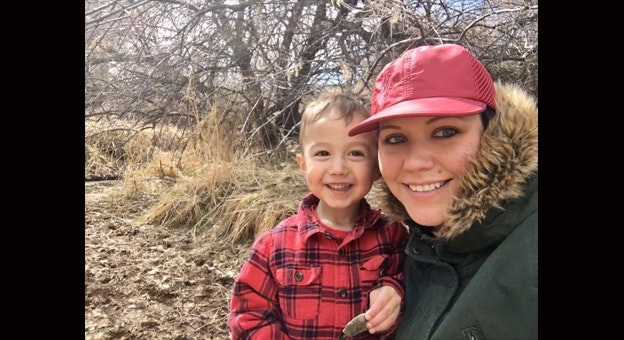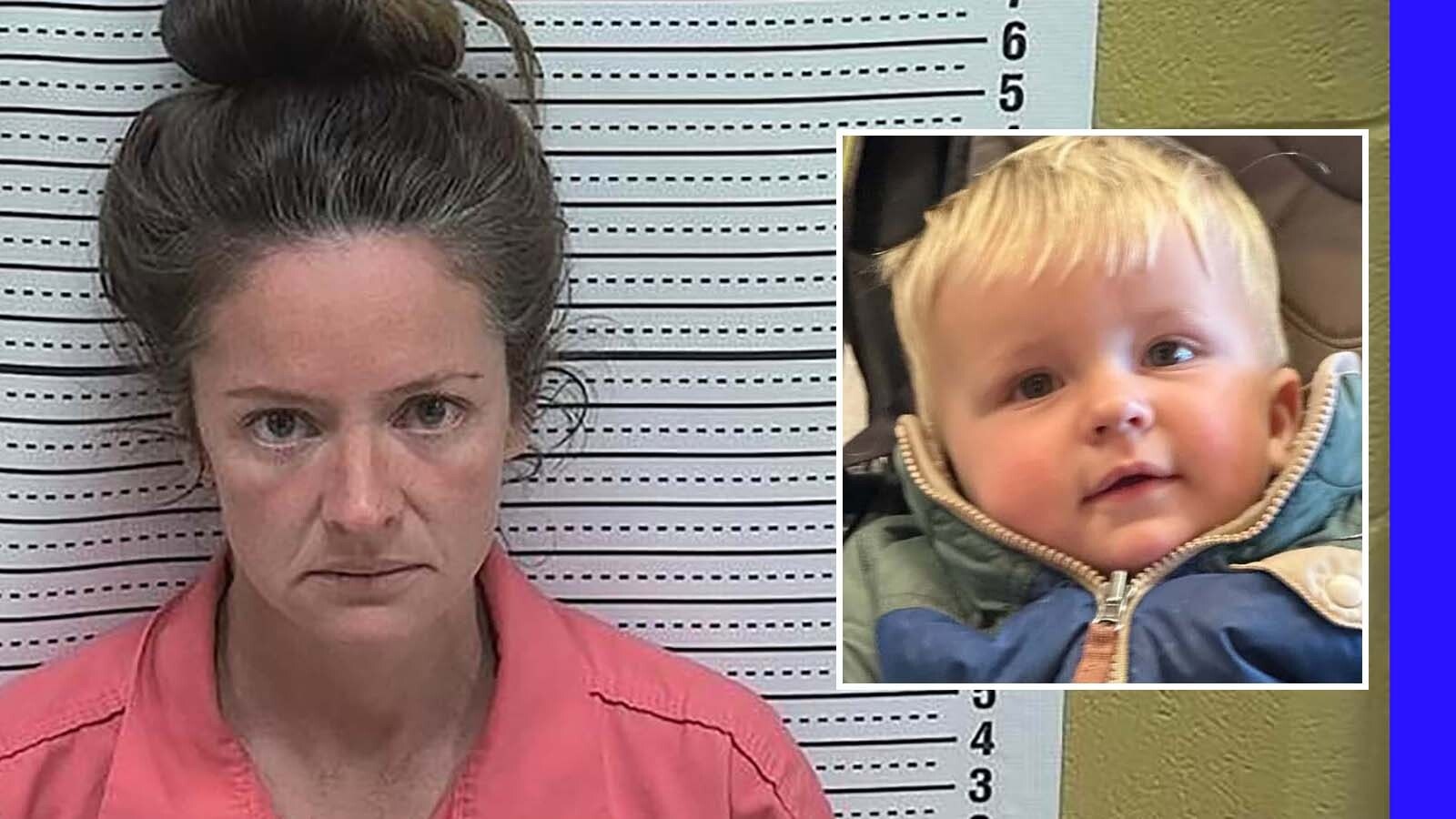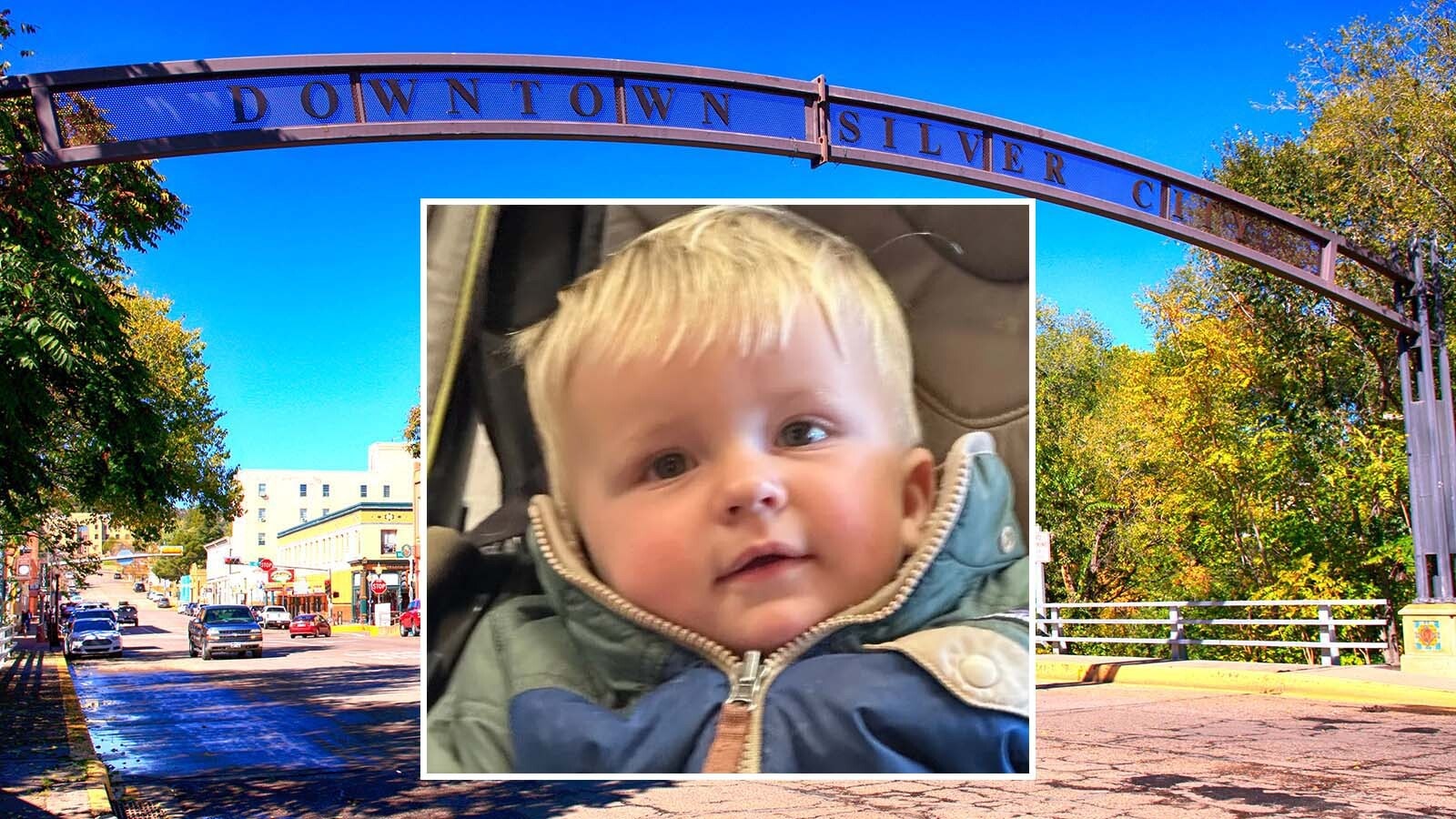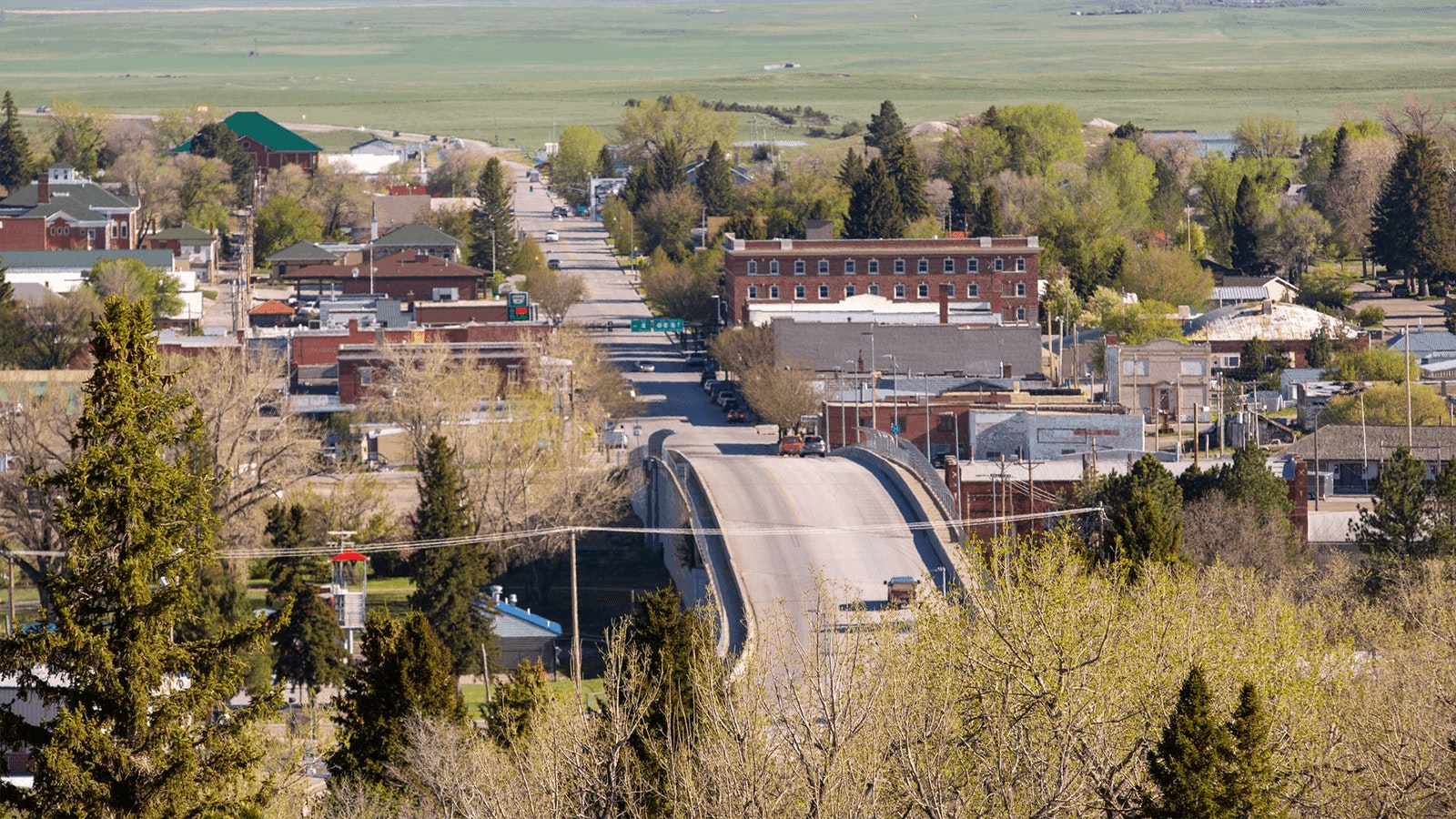Up until a couple years ago, Desirée Tinoco had never given much thought to missing people or what happens when a person runs away. The subject had never impacted her personally until a story caught her eye about a local Casper guy who had gone missing followed by another report of a man visiting from Washington who was last spotted in Big Horn County.
“How does that even happen?” Tinoco said. “How do people just disappear?”
It struck a nerve with the Casper woman who began to do some research. It turned out there were many more. Some of the cases might be newsworthy enough to warrant a story, but other times there were just desperate pleas from family members on social media or faces on posters hanging on windows and bulletin boards.
More research into the subject revealed that Wyoming does not have a statewide missing person database nor did there seem to be a unified resource for reporting such cases and sharing them publicly.
She also noticed that while missing women and children seemed to get a lot of attention, others – like older adults and men with criminal pasts or histories of substance abuse didn’t seem to generate the same urgency.
Still, as she told Cowboy State Daily, somebody out there is worried and looking for them.
“This is someone’s son, father or brother,” she said. “They don’t have a voice, so we have to give them one.”
In the absence of a resource, Tinoco decided to create one.
In July 2019, she launched the Missing People of Wyoming Facebook page to create a public forum for reports of missing persons and to provide updates and information.
Within weeks of launching, the page took off, with up to five reports of missing people being added each week. In many cases, the missing returned home but not always.
As of June 15, the page had more than 10,000 subscribers and for Tinoco has become nearly a full-time job.
If you conduct a Google search on “missing people in Wyoming,” Tinoco’s Facebook page is usually at the top of the list. And though many people have told her that she should be flattered by its success and popularity, the notion quite frankly terrifies her.
The idea that she’s somehow become the go-to source for missing people in her mind suggests both a need for the resource as well as someone qualified who can run it. As she points out, she doesn’t have the expertise or experience in the field to confidently help families or provide information.
Last winter, she approached the Casper City Council to ask for their help in advocating for a statewide missing person database that’s overseen by a law enforcement agency, preferably the Wyoming Department of Criminal Investigation (DCI).
“I don’t know what I’m doing,” she said. “I’m definitely out of my league.”
Along with speaking to city council, she’s contacted several legislators and a computer administrator at DCI – all of whom were receptive to the idea – and she’s petitioning Gov. Mark Gordon for help in launching a statewide resource. Wyoming is one of roughly a dozen states in the country that do not have a unified statewide database unlike other states including South Dakota, Montana and Colorado.
As Tinoco pointed out, Wyoming has a problem when it comes to missing people. In fact, the Cowboy State was ranked the seventh state for missing people, with 7.8 missing people for every 100,000 residents, according to a 2019 Vivint Source survey.
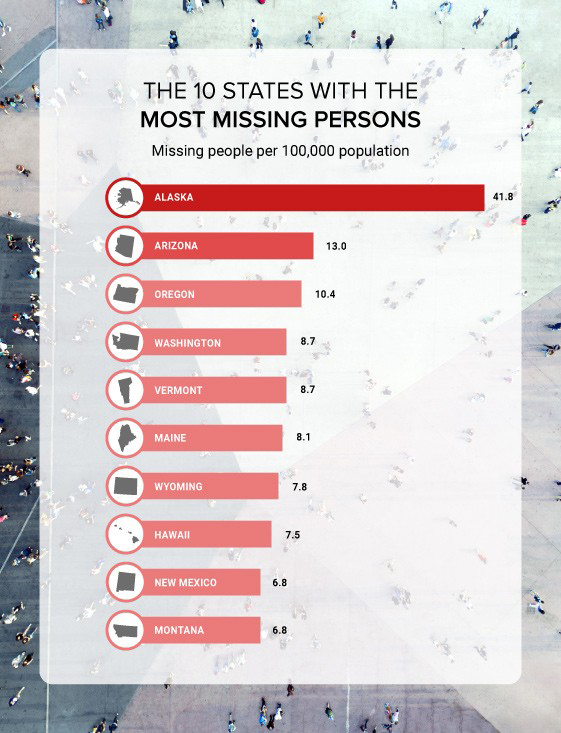
Alaska was much worse, topping the chart with 41.8 missing people per every 100,000, followed by Arizona at 13 and Oregon in third with 10.4.
Nationally, more than 600,000 individuals go missing in the U.S. each year, according to the National Missing and Unidentified Persons System (NamUs), with an estimated 4,400 unidentified bodies recovered annually. Tens of thousands of those missing people remain gone for more than a year, at which point many agencies consider their disappearances “cold cases.”
According to that same data, of the missing, approximately 60% are male and 40% female with an average age of 34 at the time of their disappearance.
In Wyoming, NamUs lists 49 active missing person cases in the past roughly 90 years. Of those, 30 are men and 19 women.
The latest person to go missing is Rupert Brown, a 42-year-old Native American man from Riverton, who was last seen on December 31, 2020. The oldest case to date is Olga Mauger who went missing from Dubois in September 1934 when she was 21.
In between there are a host of others ranging in ages and from multiple counties.
With the exception of the NamUs database and Tinoco’s Facebook page, the only other missing person database is the relatively limited and hard-to-access missing person database overseen by DCI, with the most recent entry dating back to 2018.
“It’s not up-to-date in terms of current cases,” Tinoco said.
She’s hoping that her petition will prompt the governor and lawmakers of the necessity of creating a statewide database. As of Wednesday, Tinoco’s petition has garnered over 20,000 signatures with the governor’s office voicing their support.
In an email to Tinoco on June 15 in response, Emily Soli, special counsel senior policy advisor for tribal affairs for Gordon’s office, noted that although there is no centralized public database of missing persons cases that are under the jurisdiction of local law enforcement, DCI does in fact maintain an internal database of all missing persons across the state that is not accessible to the public.
“That database is not published because it contains sensitive information and because it is not updated in real-time (i.e. outside of ordinary work hours),” Soli wrote. “Its purpose for DCI is to ensure that the State reports to the appropriate federal clearinghouse any missing persons cases which remain unresolved after 60 days.”
After this point, those names are then listed in the federal NamUs database, she further explained.
Creating and maintaining a statewide, real-time missing person’s database as Tinoco suggests, Soli said, would require legislation and an appropriation that the governor would support.
“The Governor would certainly consider any bill on the issue,” she said, noting his creation of the Missing and Murdered Indigenous Persons Task Force, which recently published the first statewide report in the country. “The Governor has made missing persons a priority and would welcome legislative support for those efforts.”
Tinoco, who is Native American and has lived on two reservations, acknowledged the importance of that initiative.
“It’s a huge effort,” Tinoco said, “and I don’t want to take away from it.”
Still, she thinks a centralized database would go a long way in helping combat the missing person problem in general. Wyoming is years behind the curve in her estimation.
“Other states are lacking databases,” she said, “but Wyoming is definitely the worse. This is one case where our propensity for small government definitely works against us.”
A second issue that compounds the problem, according to Tinoco, is that every law enforcement agency – including tribal police – has its own protocols for handling missing person cases and runaways.
There’s also a lot of misinformation out there, she noted, when it comes to how and when to report runaways or missing persons. For example, it is widely believed that a person has to be missing for 48 hours before being reported as missing, however, that is not the case for the majority of local law enforcement agencies.
The effort definitely poses challenges, according to former Laramie County law enforcement officer and retired private investigator Dave Wolfskill, who has been involved in many local missing person cases.
“A major challenge is a lack of communication and similar procedures between law enforcement agencies,” he said. “I think a central agency (DCI, maybe) should get all missing notifications from the police agencies and that someone at that central agency should be responsible to follow up on proper procedure.”
Casper private investigator Amanda Waldron, who also heads up the middle school expulsion program for Natrona County, agrees that a unified central database accessible to multiple agencies would go a long way in also helping to combat the rising number of missing people and teenage runaways.
“We are seeing an increase of mental health concerns here in Casper,” she said, “especially among our teen population, and it’s a challenge to collaborate with law enforcement as they don’t respond to runaway cases in a very effective of efficient manner.”
She advocates for an agency or group which would focus on this specific demographic. She also thinks the state could do a far better job providing resources for those in crisis, including a hotline as well as hanging posters and flyers in bathrooms and other public spaces to provide resources for vulnerable youth and victims of human trafficking.
In the meantime, Tinoco is going to keep lobbying for the database and hopes her petition continues to gain steam, repeating the mantra that makes her passionate about the cause.
“The missing don’t have a voice,” she said, “so we need to speak for them.”

